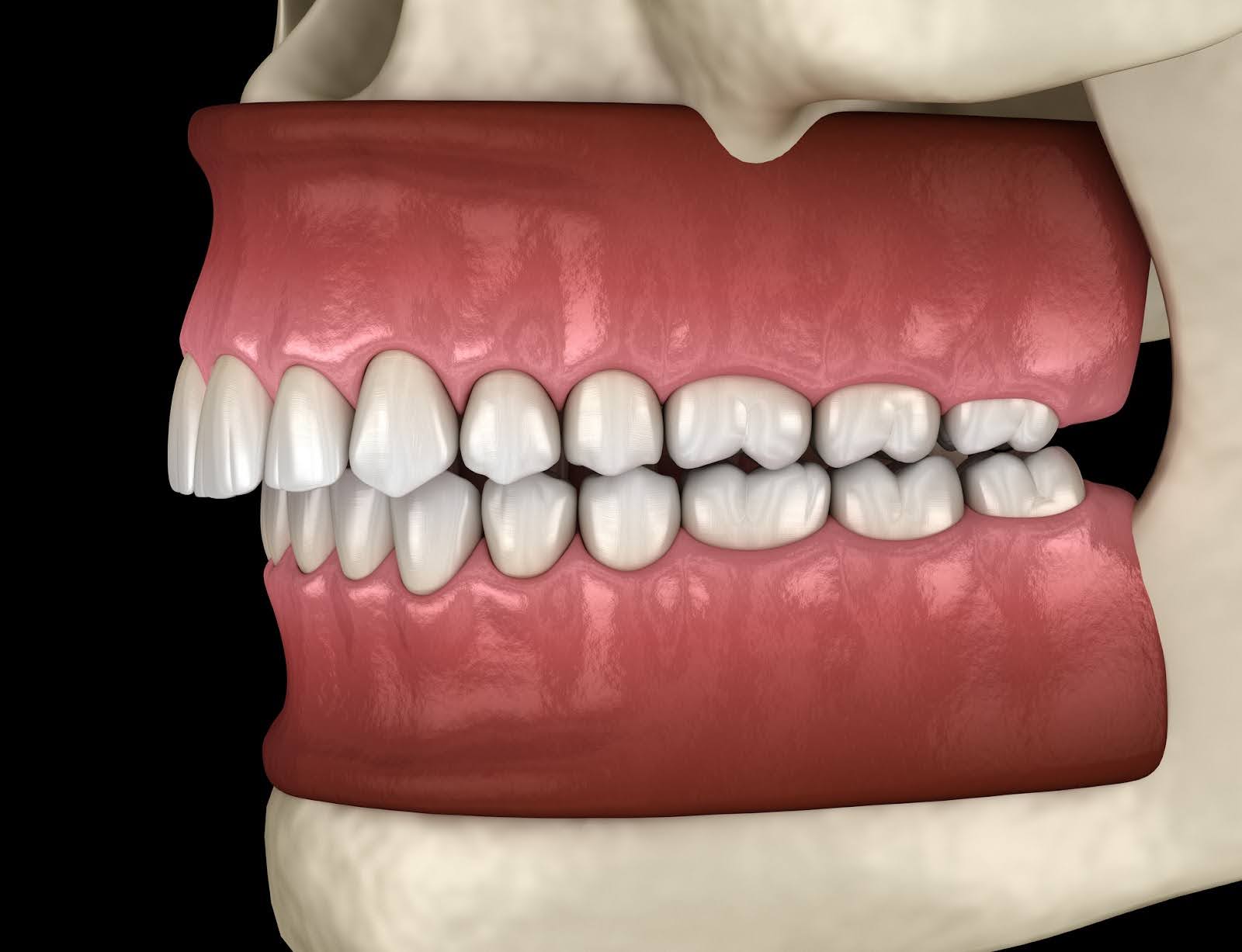Overbite

What is an Overbite?
An overbite is an orthodontic condition where the upper front teeth overlap the lower front teeth more than usual when the mouth is closed. In a normal bite, the upper teeth naturally sit over the lower teeth approximately 2mm, allowing us to bite and provide a balanced appearance. However, with an overbite, this overlap is noticeably pronounced, which may sometimes lead to the lower teeth being completely hidden.
Overbites are common orthodontic conditions and can be categorised as either dental or skeletal. A dental overbite means the teeth themselves are the cause of the overbite due to their positioning. On the other hand, a skeletal overbite indicates the jaw is responsible, specifically the upper jaw’s overdevelopment or the underdevelopment of the lower jaw.
There’s a misconception that overbites are merely a cosmetic issue. While they influence facial aesthetics, they also have implications for oral health and function, and are a widespread condition with varying degrees of severity.
What causes overbite?
Various factors can cause overbite, including:
- Genetic factors: An overbite can be inherited. If your parents or grandparents had an overbite, there’s a chance you could develop one too.
- Childhood habits: Prolonged behaviours during childhood, such as thumb sucking, excessive pacifier use, or prolonged bottle feeding, can lead to the development of an overbite.
- Tongue thrusting: Pushing the tongue against the back of the front teeth during swallowing or speaking can result in an overbite over time.
- Dental conditions: Issues like crowded teeth or the presence of extra teeth can lead to an overbite. Conversely, the premature loss of baby teeth or the presence of abnormally shaped teeth can also cause this condition.
- Jaw development issues: Sometimes, the upper jaw might develop too extensively compared to the lower jaw, leading to an overbite.
- Injury: Extreme Trauma or injury to the jaw can sometimes cause a misalignment of the jaw, resulting in an overbite.


Implications of an Overbite
An untreated overbite, especially if it’s pronounced, can lead to several concerns such as:
- Tooth wear and damage: The disproportionate overlap of the upper teeth over the lower ones can lead to excessive wear on the tooth enamel. This wear can make teeth more vulnerable to chipping, cracking, and sensitivity due to exposure of the underlying dentin.
- Chewing and digestion concerns: An overbite can affect the alignment and function of the back molars, making chewing less efficient. Inefficient chewing can indirectly influence digestion, as the process of digestion begins in the mouth with adequately chewed food mixed with saliva.
- Speech difficulties: Just as an underbite can affect speech, an overbite can as well. The misalignment might lead to lisps or other articulation challenges, making certain sounds difficult to pronounce.
- Aesthetic concerns: From a cosmetic perspective, a pronounced overbite can affect the profile of an individual, making the chin look recessed or the lips appear protruded. This might lead to self-consciousness and reduced confidence.
Overbite Treatment
Addressing an overbite effectively requires precision, expertise, and the use of the most advanced orthodontic solutions. At Gullotta Orthodontics, we offer a range of treatments tailored to the unique needs of each patient. Check out our results gallery to see for yourself!
Correcting an Overbite
The treatment approach for an overbite varies depending on the age of the patient, as both the jaw and teeth have different growth and adaptive potentials at various life stages. Here’s an overview of overbite treatments tailored to different age groups:
Braces: Braces are commonly used to slowly shift all the teeth into their correct alignment. This might involve traditional metal Damon braces or other types like Lightforce Braces.
Tooth removal: Sometimes, there might be a need to extract either baby teeth or permanent teeth. This is done to provide adequate space for the adult teeth to come in properly and align.
Surgery: In some severe cases, surgical intervention might be necessary to rectify the alignment of the jaw. This is especially true when the overbite is caused by skeletal issues rather than just dental misalignments.
Retainers: After the orthodontic treatment with braces, retainers are prescribed. These devices ensure that the teeth remain in their new, correct positions and don’t drift back to their previous alignment.
Regardless of age, it’s crucial to consult with an orthodontist to determine the most suitable treatment approach tailored to individual needs and the severity of the overbite. If you’re on the Gold Coast, contact us today to schedule a consultation.
